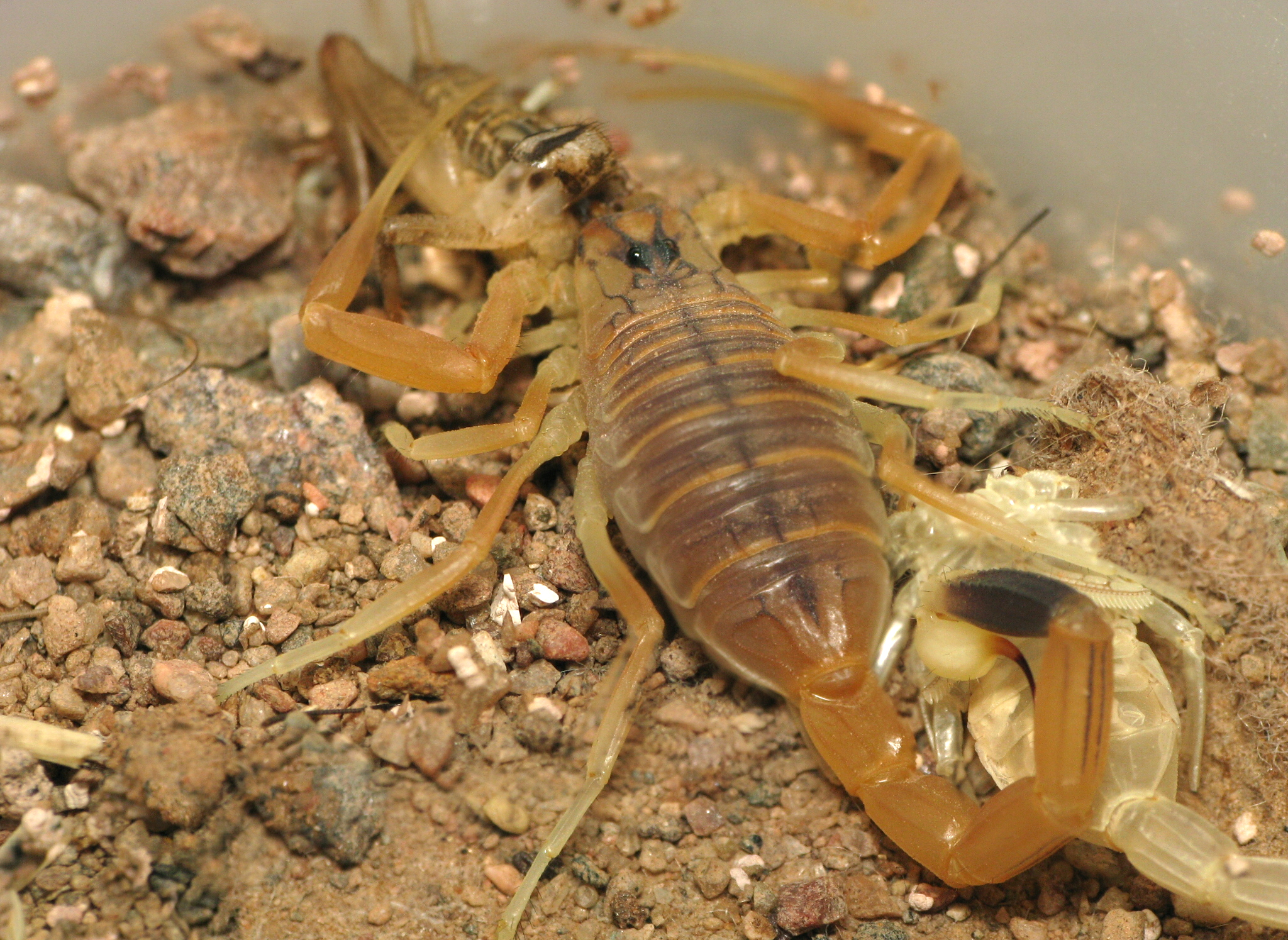The Five-striped Smooth-tail
Don't Mess with this Guy! (Interactions)
How does this scorpion deal with others?!
As stated on the Form and Function Page Leiurus quinquestriatus uses its speed and camouflage to hunt. This scorpion almost exclusively hunts during the night (Abushama, F.T. 1964). When hunting, deathstalkers sit in one spot, waiting until their prey get close, and then they strike. When striking the scorpions use their pincer and also attack with their stinger if their prey fights back at all. The prey of L. quinquestriatus includes small insects such as crickets, arachnids such as scorpions and spiders*, centipedes* and earthworms (Ross, L.K. 2008). Although deathstalkers prefer eating freshly killed organisms, if food is scarce they will also eat less fresh organisms. Overall the deathstalkers size limits what they can hunt, but they are extremely successful with what they do hunt.
Although deathstalkers are one of the most deadly organisms in their environment, they have a fair number of predators. They are attacked by other night predators such as other deathstalkers, other scorpions, centipedes, and certain types of bats*. Besides the bats, all of the predators use their speed, own poison, or reach to disable the deathstalkers before they have a chance to fight back, because L. quinquestriatus is so deadly (Ross, L.K. 2008). While the other predators use their speed and agility to hunt deathstalkers, bats use brute force and a mysterious resistance to the deathstalker’s venom. In experiments Hemprich’s long-eared bat has demonstrated this resistance by eating the entire scorpion, including the venom sac (Holderied et al. 2011). The bats simply locate the scorpions and attack even while being stung by the scorpion. It’s fair to assume that the high mortality rate of L. quinquestriatus is mainly caused by all of its predators.
L. quinquestriatus also interacts with the human race. The most alarming of interactions is that they can kill children and older adults, and they can cause great pain if they sting a healthy adult. The venom causes heart issues and in the worst case scenarios it causes pulmonary edema, which is fluid buildup in the lungs and can result in death (Goyffon et al. 2012). Although they are dangerous certain people enjoy owning L. quinquestriatus. This can possibly be explained because with all of the color variations, they have an addicting “collect them all” aspect. The final human interaction is much more positive. L. quinquestriatus has been used to treat certain diseases and has been linked to repairing brain tissue (Mamelak and Jacoby. 2007). Even though L. quinquestriatus is the third most poisonous scorpion in the world, it may also save many lives with further research.
* These are not links to organisms that L. quinquestriatus directly interacts with but rather organisms similar to those that interact with the deathstalker. To learn more click on the links.
Follow this link to watch a pair of deathstalkers kill and begin to eat grasshoppers.
Find more resources so you can continue to learn about Leiurus quinquestraitus on the Reference Page or head back to the Home Page.
